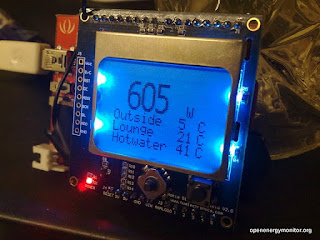Hello everyone,
This is my first contribution to this blog after months of reading it :)
My main task in this internship is to dimension and design photovoltaic systems for our clients overseas, and I could not help but notice how pricy the existing monitoring solutions are: more than 400 euros for a box that monitors your inverter's production and makes the data available on the internet. So I started thinking about building a system that does that for a very "affordable" cost. And since I have caught the Arduino virus for quite some time (Wired magazine's fault), I started to think about making an Arduino-based photovoltaic plant monitor, this is how I found the open energy monitor initiative.
Months of browsing and thinking made this little idea grow in my head like a good cancer, and talking to people about it generated mostly positive feedback.
I am now determined to launch a commercial product (
DIY-Drones business model, more or less) that is based on the open energy monitor. This device, which I name for the moment Kirikou, will monitor the mains AC that comes from the meter to the distribution box in each building, plus 5 to 20 sub-circuit consumers. It will not require the intervention of an electrician (clip CT's). It will send the data to Pachube or Google Charts via Wifi. And it will cost 200-240 euros per unit.
Quite an ambitious target I know, but with the help and support of the inventors, the community and some other people, I am confident that I can make it take off.
Open source hardware businesses started to pop up like mushrooms the last years, and that's fantastic! It is only fair to share the knowledge about things, it is a win-win situation for everyone and I really hope to see many businesses based on the open energy monitor.
There are also some unconventional ways to get it started, like these sponsoring programs that help entrepreneurs get on their feet in the beginning. A very good friend sent me this link to the Zurich HUB fellowship, and I applied.
I thought it would be in the spirit of the competition to get a community involved, and I created this Ulule page (screenshot below) to raise 120 euros to build my electricity monitor based on the Blackwidow board.
I am really excited to start this adventure with the support of a community, I believe that we could develop and spread this together.
I believe the first step should be to get more organized and communicate more efficiently on the technical choices and so on.
Your feedback, comments, criticism is most welcome, you can also visit
my blog if you want to know me better.
By the way, the verdict from the Zurich HUB will be announced on Dec 20th (in a few hours), please wish me good luck :)
Amin






